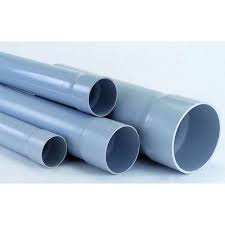Garri Production From Cassava Tubers In Nigeria; The Feasibility Report.

Cassava is one of the most important root crops in Nigeria. Apart from being a staple crop in both rural and urban house-holds cassava is a major source of income to cassava farmers and processors in the rural areas.
Nigeria is currently the world leading producer of cassava, producing about forty million (40,000,000) MT per annum and cassava alone contributes about five percent (5%) of agricultural GDP in Nigeria for food or domestic purposes but its industrial processing and utilization has been very limited.
Since the return to civil rule in 1999, Nigeria has witnessed steady but minimal growth of the middle class. These growth continues to drive the increasing social and health awareness of the need for hygienically well prepared foods required for good quality living standard of people.
Garri, a product gotten from the processing of cassava tubers is a very important staple food item in Nigeria. It is one of the food items that defy socio-economic class, religious and ethnic boundaries, It is doubtful if it is not eaten daily in one of every two homes in the country.
Garri is a creamy-white, granular flour with a slightly fermented flavour and a slightly sour taste made from fermented, gelatinized fresh cassava tubers. Garri is widely known in Nigeria and other West African countries.
It is a popular West African food. It is most widely eaten as Eba. Eba is made by sprinkling garri into a bowl or pot of boiling water and stirred until dough of garri is formed. You could add more water to the dough and stir to your desired texture. The finished product is called eba.
The annual national demand for garri is estimated at one million (1,000,000) tons while the national supply estimate is about two hundred and fifty thousand (250,000) tons.
This coupled with the geometrically exploding population and continued rural-urban drift continues to fuel the demand for food stuffs especially Garri, a staple food in the country.
This report is to examine the financial viability or otherwise of establishing a Garri production plant in Nigeria with cassava tubers as the raw materials.
The production capacity of the proposed business is four (4) tons per day for three (3) shifts of eight (8) hours each working at eighty percent (80%) of the installed capacity in the first, second, third, fourth and fifth year of operations respectively.
An input output ratio of four to one (4:1) was assumed from raw materials to finished products and the finished products would be packaging in twenty-five (25) kg printed PP woven sack with inner protectively polyethylene material.
Table of Contents
EXECUTIVE SUMMARY 1.0 Business Overview 1.1 Description of the Business 1.2 Vision and Mission Statement 1.3 Business Objective 1.4 Value Proposition 1.5 Critical Success Factor of the Business 1.6 Current Status of Business 1.7 Description of the Business Industry 1.8 Contribution to Local and National Economy 2. Marketing Plan 2.1 Description of product 2.2 Product Packaging and delivery 2.3 The Opportunity 2.4 Pricing Strategy 2.5 Target Market 2.6 Distribution and Delivery Strategy 2.7 Promotional Strategy 2.8 Competition 3. Production Plan 3.1 Description of the Location 3.2 Raw Materials 3.3 Production Equipment 3.4 Production Process 3.5 Production Cost 3.6 Stock Control Process 3.7 Pre-Operating activities and expenses 3.7.1 Operating Activities and Expenses 3.8 Project Implementation Schedule 4.0 Organizational and Management Plan 4.1 Ownership of the business 4.2 Profile of the promoters 4.3 Key Management Staff 4.3.2 Management Support Units 4.4 Details of salary schedule 5. Financial Plan 5.1 Financial Assumption 5.2 Start up Capital Estimation 5.3 Source of Capital 5.4 Security of Loan 5.5 Loan Repayment Plan 5.6 Profit and Loss Analysis 5.7 Cash Flow Analysis 5.8 Viability Analysis 6.0 Business Risk and mitigation factor 6.1 Business Risks 6.2 SWOT Analysis
Project Specification:
Additional Info
Get this Report
Direct bank transfer
To order the report, Please do pay the sum of ₦30,000 into
Account Name : Foraminifera Market Research Ltd
Account Number : 274 20 569 37
Account Name : Foraminifera Market Research Ltd
Account Number : 101 76 603 95
Account Name : Foraminifera Ventures
Account Number : 011 66 066 32
Make your payment directly into our bank account. Please use your Order ID as the payment reference. Your order will not be shipped until the funds have cleared in our account.
Instructions
After payment call us on 01 -29 52 413 / 08033782777 or email us at foraminiferamarketresearch@yahoo.com with the payment details. After payment confirmation, the soft copy of the report would be sent to you within 24 hours.



